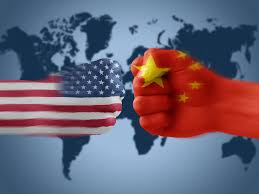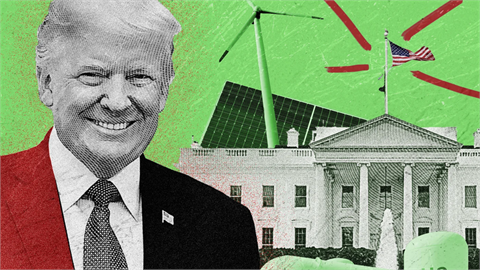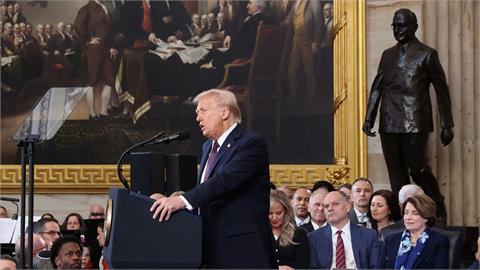by Shang-Jin Wei* The announcement by the Trump administration that the United States will sanction China for intellectual-property theft is the latest salvo in a deepening trade dispute between the two countries
The announcement by the Trump administration that the United States will sanction China for intellectual-property theft is the latest salvo in a deepening trade dispute between the two countries. It follows Trump’s March 8 pledge to place higher tariffs on Chinese steel and aluminum – a move some predict could have dire consequences for the global trading system.
But while these penalties are generating frightening headlines – and rattling investors – it is the recent tax bill passed by the US Congress that will do more to exacerbate trade tensions between the US and China. Unless the implications of that move are fully appreciated, bilateral trade ties could worsen much more before they improve.
The new tax legislation will widen the US government deficit by $1-2 trillion over the next decade, a shortfall in national saving that will not be offset by an increase in private-sector saving or reductions in private-sector investment.
What this means for trade, and particularly trade between the US and China, is key. Because the US current-account deficit is the sum of investment minus private sector and government saving, the US current-account deficit is likely to increase – again, by as much as $2 trillion over the next decade. The US trade deficit will surge accordingly, and the annual bilateral deficit with China could grow by $50-100 billion.
When this happens, US politicians will need to cast blame, and China will be the likely scapegoat. In that case, the new US tax law – hailed by Trump as a victory for the American people – will come home to roost in the form of even more serious trade tensions. While the connection between the tax law and an increase in the US trade deficit is not well understood, its impact will be felt for years to come.
To be sure, Trump’s demand for stronger intellectual-property rights in China is justified, given many cases of patent and trademark infringement. In several sectors, including energy and telecommunications, China requires foreign firms to share proprietary technology with their Chinese partners as a condition of market access. Yet Chinese officials could be persuaded to strengthen intellectual-property protections, possibly through bilateral negotiations or World Trade Organization litigation.
The changing innovation landscape in China is one reason for optimism on this front. Simply put, Chinese firms would also benefit from a stronger intellectual-property-rights regime. In the past, foreign firms provided the innovation, and Chinese firms imitated foreign design. Protecting intellectual property was largely a one-way street; only the foreign firms benefited.
That is no longer true. Many Chinese firms innovate and have obtained patents not only in China, but also in the US. Chinese firms like Tencent, DJI, and Huawei are as innovative as any US company, and Chinese CEOs are pushing for stronger intellectual-property protection at home. With the need to compel multinational firms to transfer technology waning, and Chinese firms standing to benefit from intellectual-property protection, the US and China can more easily find common ground.
This is not to say that negotiations would be easy. For starters, the Chinese view their policies on technology as a necessary response to rising labor costs at home, and as a hedge against US restrictions on high-tech exports to China. With a rising wage level, China’s labor costs now exceed those of India, Bangladesh, and Vietnam. As a result, a shift to more technically sophisticated production has become essential. If Chinese companies cannot buy high-tech products from the US, they are even more motivated to develop their own.
A second challenge to negotiations, if they occur, is dwindling support from corporate America. In the past, companies like Boeing, Caterpillar, General Electric, and Cisco were voices of moderation; they saw themselves as beneficiaries of China’s large markets and low-cost labor. But the business landscape has changed dramatically, and today these same companies are more likely to view Chinese firms as competitors – not only in China, but around the world as well.
If not properly managed, these forces will fuel a vicious cycle. The more restrictions the US places on technology exports to China, the more China will promote domestic technology. Conversely, the more Chinese firms innovate, the less enthusiastic US firms will be about helping their counterparts enter the US market.
Still, some form of grand bargain on intellectual-property rights is possible if the trade puzzle is properly mapped out. Strengthening intellectual-property rights in China is not a zero-sum game; better protections can benefit both countries.
But the biggest puzzle piece of all is one few are talking about. If the US and China can’t find common ground on how to address the ballooning US trade deficit, progress on the big issues of today may become irrelevant tomorrow.
China’s trade surplus and the US trade deficit ultimately reflect saving and investment imbalances. The non-market "trade remedies” being considered by the US and China might produce a smaller trade imbalance between the two economies, but at the cost of a larger imbalance with the rest of the world. This could leave consumers and companies in both countries, and around the world, worse off.
*Shang-Jin Wei is the Chief
Economist at the Asian Development Bank and the head of its Economic
Research and Regional Cooperation Department.*




